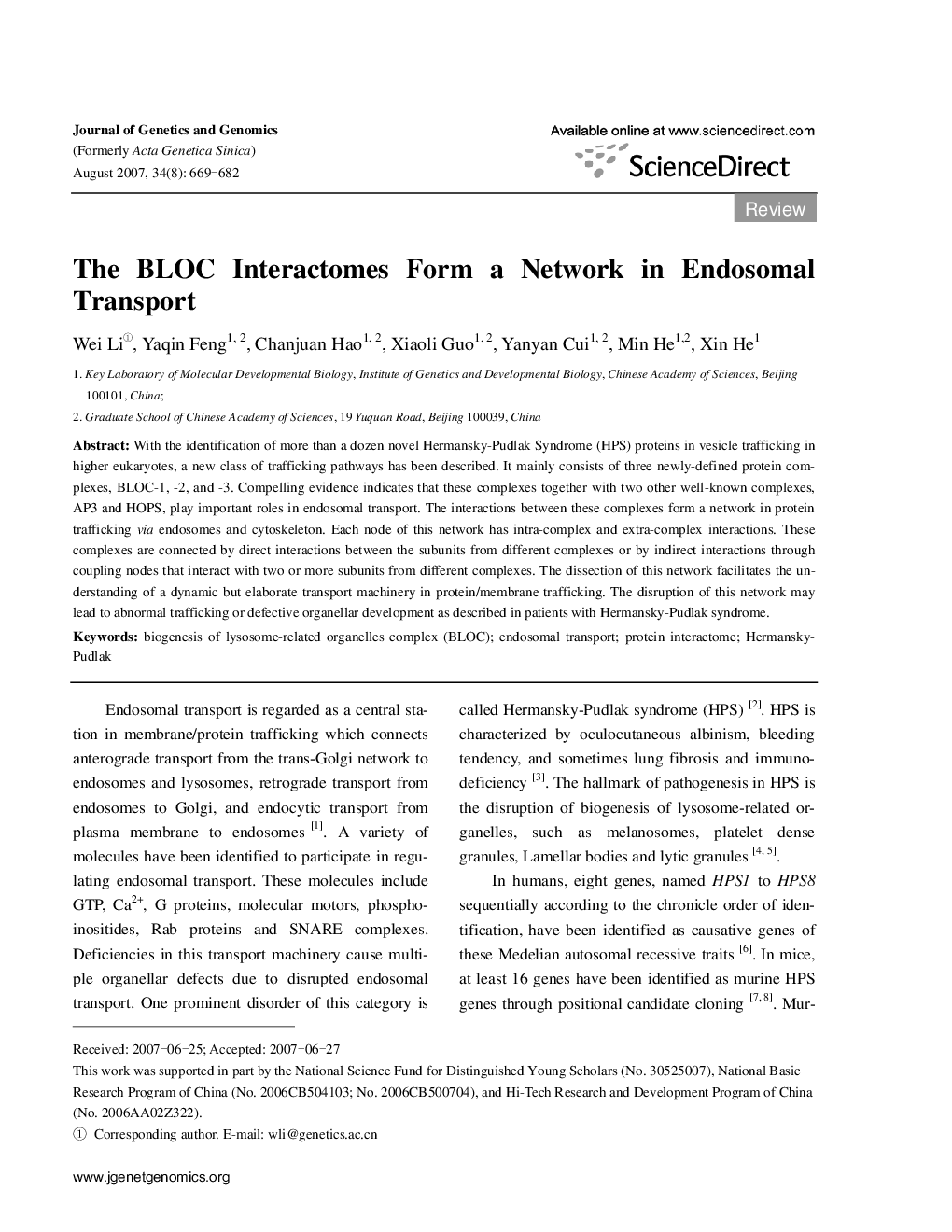| Article ID | Journal | Published Year | Pages | File Type |
|---|---|---|---|---|
| 2788229 | Journal of Genetics and Genomics | 2007 | 14 Pages |
With the identification of more than a dozen novel Hermansky-Pudlak Syndrome (HPS) proteins in vesicle trafficking in higher eukaryotes, a new class of trafficking pathways has been described. It mainly consists of three newly-defined protein complexes, BLOC-1, -2, and -3. Compelling evidence indicates that these complexes together with two other well-known complexes, AP3 and HOPS, play important roles in endosomal transport. The interactions between these complexes form a network in protein trafficking via endosomes and cytoskeleton. Each node of this network has intra-complex and extra-complex interactions. These complexes are connected by direct interactions between the subunits from different complexes or by indirect interactions through coupling nodes that interact with two or more subunits from different complexes. The dissection of this network facilitates the understanding of a dynamic but elaborate transport machinery in protein/membrane trafficking. The disruption of this network may lead to abnormal trafficking or defective organellar development as described in patients with Hermansky-Pudlak syndrome.
